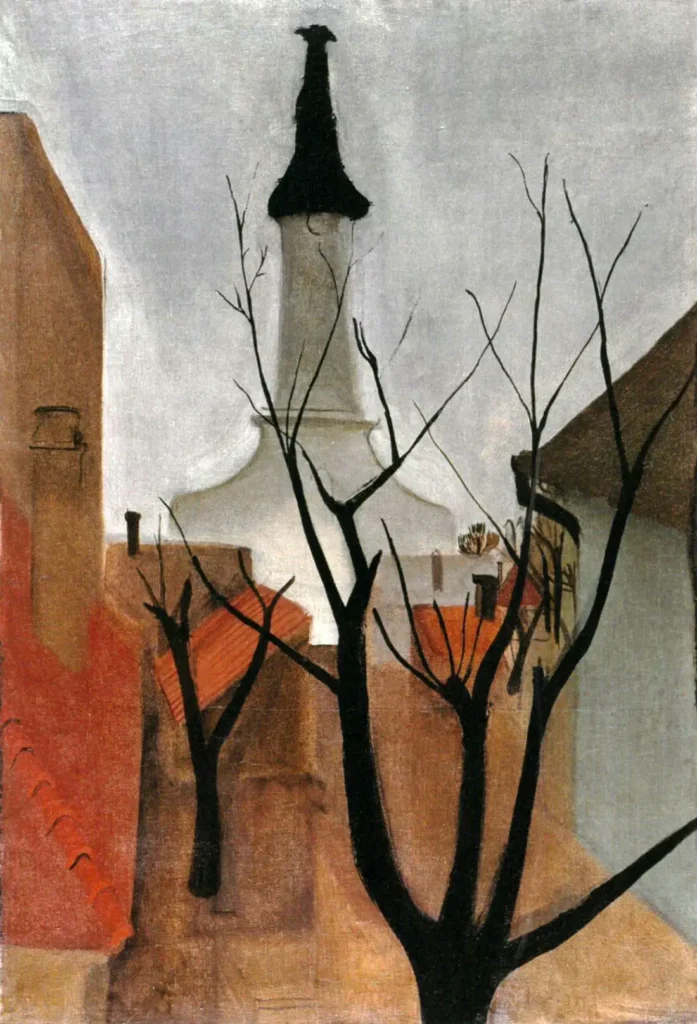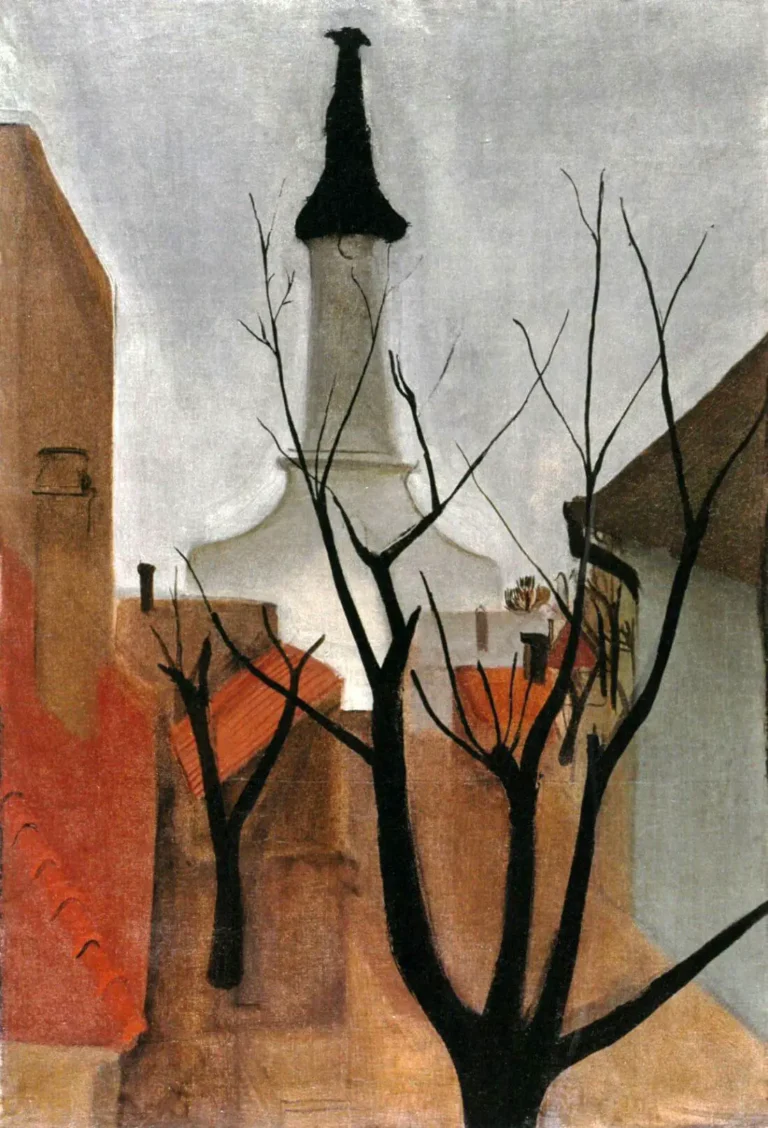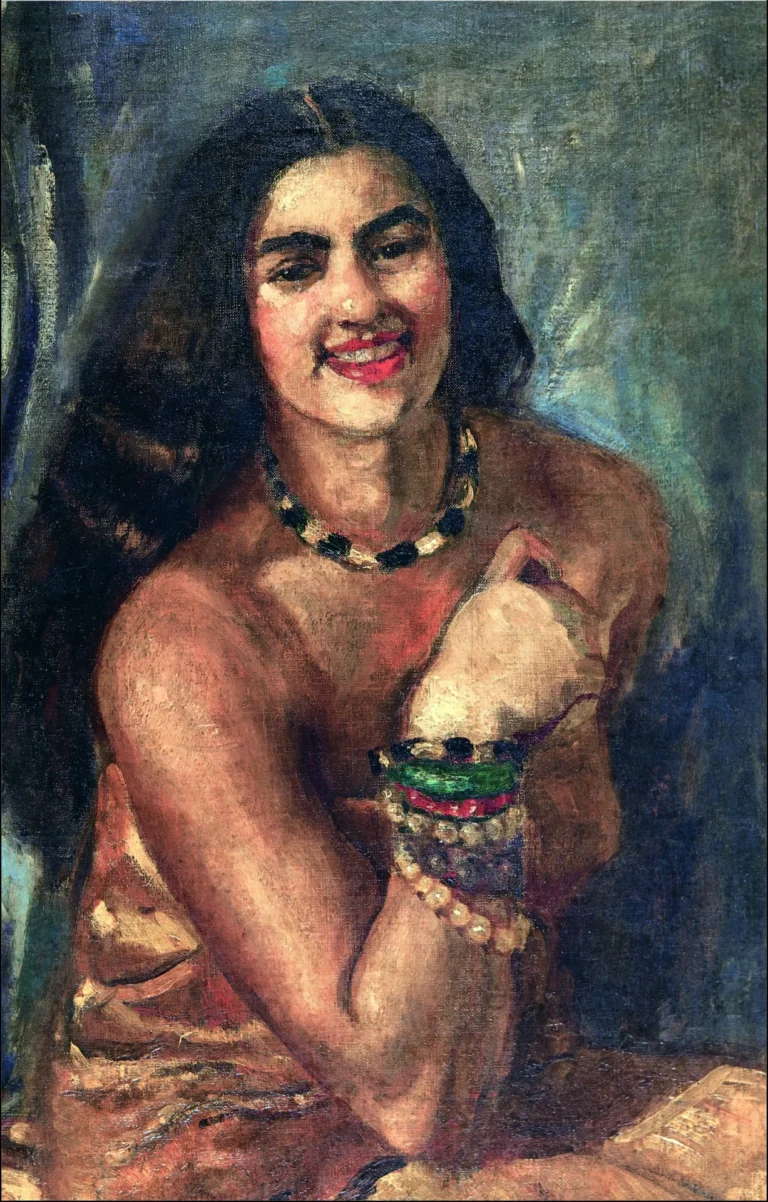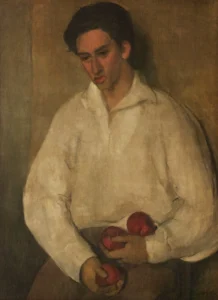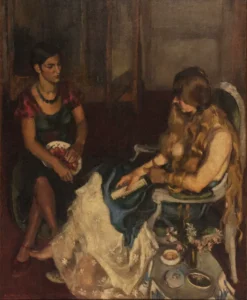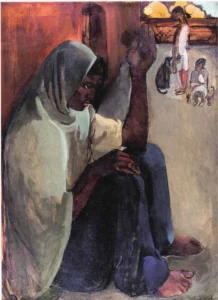Hungarian Church Steeple (1938)
Created in 1938, Hungarian Church Steeple exemplifies Amrita Sher-Gil's artistic maturity during her time in Hungary. The painting reflects her stylistic evolution, incorporating loose brushwork that captures the essence of rural life. Influenced by her experiences in France, Hungary, and India, this artwork showcases her unique cultural blend and highlights the serene beauty of the Hungarian landscape.
1938
About the Artwork
This artwork was produced during a transformative period in Amrita Sher-Gil's life and career, primarily after her marriage to Victor Egan in 1938. Living between Kiskunhalas and Lake Balaton, Sher-Gil immersed herself in the local culture, drawing inspiration from the rustic environment surrounding her. Hungarian Church Steeple is representative of this eclectic period, as it forms part of a series that depicts rural landscapes and village scenes with a focus on the spiritual and communal essence of Hungarian life, often showcasing bare trees which become symbols of the environment's stark beauty.
Did You Know
Liked what you see? Add it to your collection.
Enjoyed reading? Share it.
... continued
Location and Period
The painting was executed during Sher-Gil's second period in Hungary, after her marriage to Victor Egan in 1938. During this time, she lived between Kiskunhalas and Lake Balaton, where Egan was stationed for his military duty.
Style and Composition
Hungarian Church Steeple reflects the artistic maturity and the blend of influences Sher-Gil had accumulated from her time in France, Hungary, and India. The painting features characteristic elements of her later work, such as loose brushwork and a focus on capturing the essence of rural life.
Context and Themes
This painting is part of a series that includes other works like "Hungarian Village Market," "In the Garden," and "The Merry Cemetery," all of which were painted during the same period. These works often featured bare trees and other elements of the Hungarian landscape, which were significant in her compositions.
Ownership and Exhibition
The painting is currently in a private collection. It was originally gifted to Viola Egan, likely a relative of Victor Egan, Sher-Gil's husband.
Artistic Significance
Hungarian Church Steeple is one of the many works that showcase Sher-Gil's ability to capture the simplicity and beauty of rural life, reflecting her unique blend of Western artistic training and her deep connection to Indian and Hungarian cultures.




